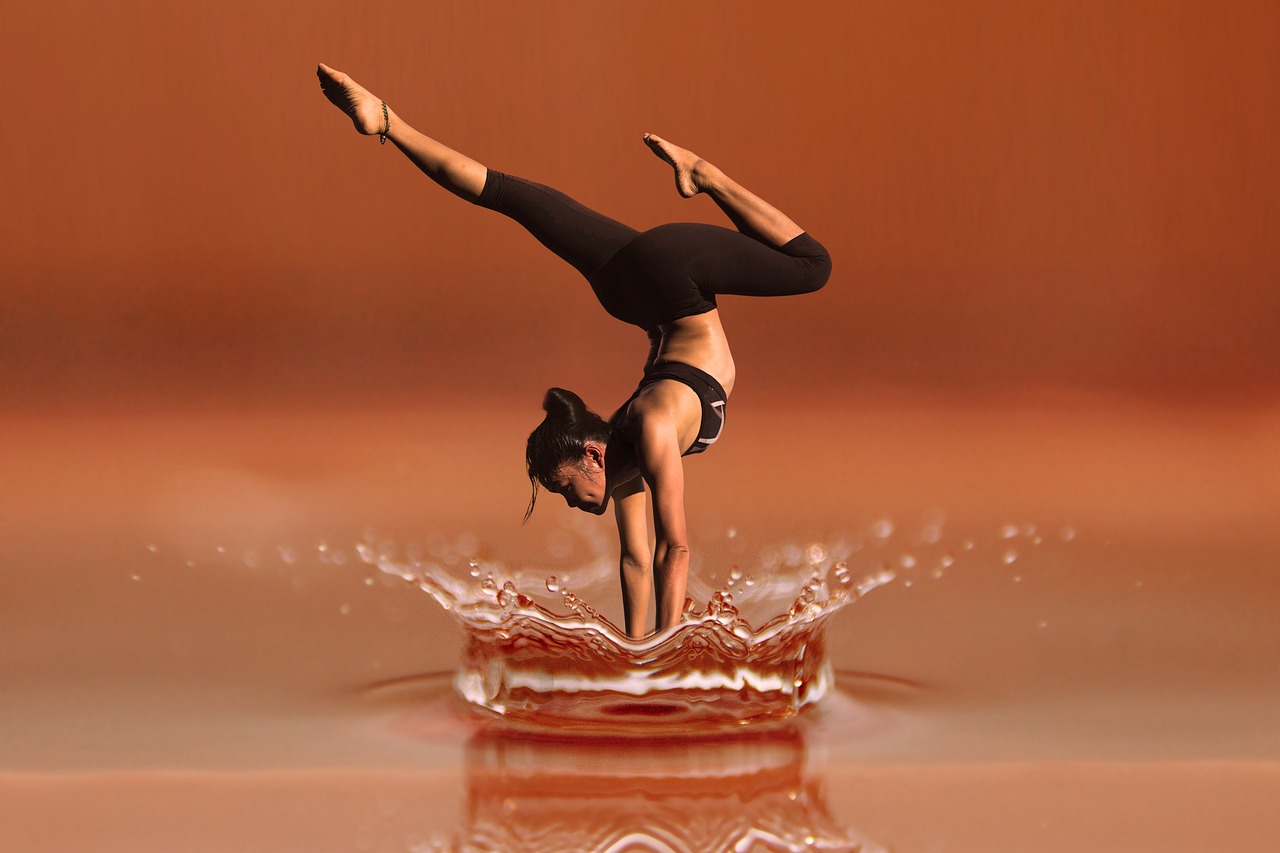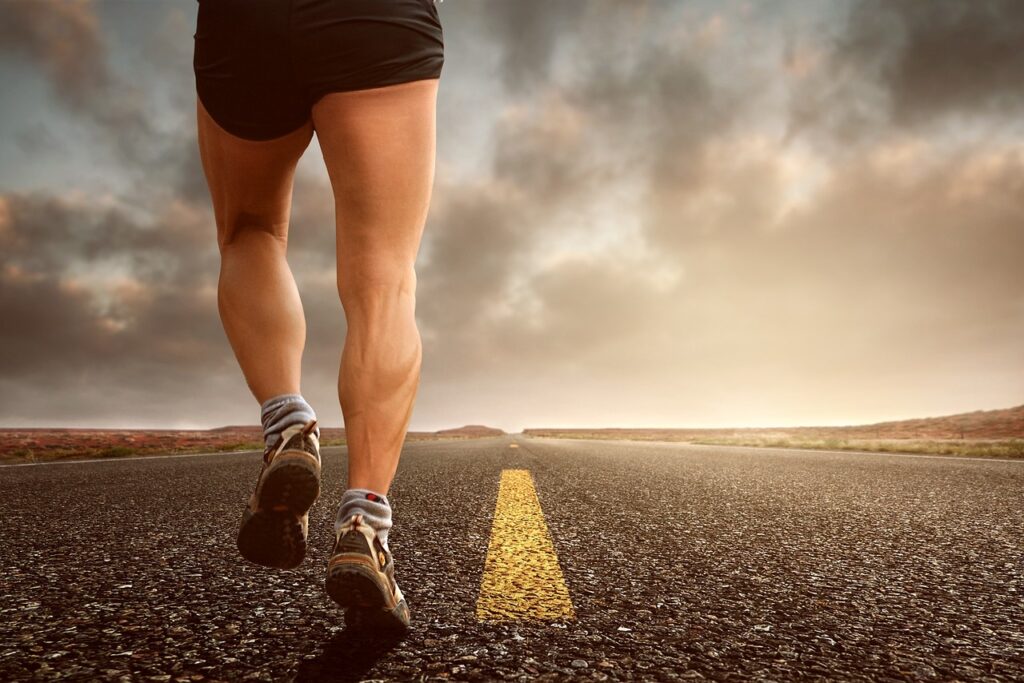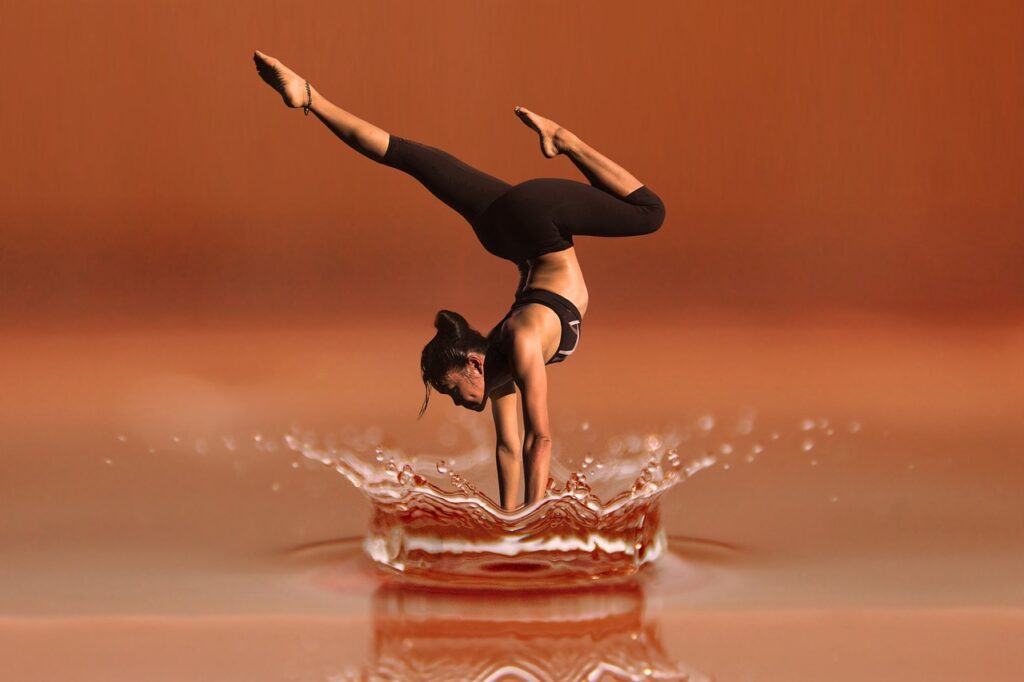
In your quest for a trimmer waistline and a healthier you, look no further than “Effective Exercises to Reduce Belly Fat.” This incredible product provides you with a comprehensive guide to targeted exercises that will help you shed those stubborn pounds around your midsection. With clear instructions and step-by-step demonstrations, you’ll be on your way to a flatter and more toned stomach in no time. Say goodbye to belly fat and hello to a more confident you!

Cardiovascular Exercises
Running
Running is an excellent cardiovascular exercise to help you reduce belly fat. It engages multiple muscles in your body, including your core and legs. Whether you prefer jogging or sprinting, running can increase your heart rate and burn a significant amount of calories. Start with a comfortable pace and gradually increase your speed and distance over time. Consider incorporating interval training into your running routine by alternating between periods of high-intensity sprints and slower recovery jogs. This can help maximize your fat-burning potential and increase overall endurance.
Cycling
Cycling is a low-impact exercise that can be enjoyed both outdoors and indoors on a stationary bike. It is great for targeting your core muscles and burning calories. Whether you choose to cycle on hilly terrains or opt for stationary cycling classes, you can effectively reduce belly fat. Start with shorter distances and gradually increase the duration and intensity of your cycling sessions. Remember to maintain proper form and adjust the resistance or gear on your bike to challenge yourself and continue seeing progress.
Jumping Rope
Jumping rope is a fun and effective cardiovascular exercise to burn belly fat. It not only engages your core muscles but also works your arms and legs. Jumping rope can be done anywhere and doesn’t require expensive equipment. Start with a few minutes per day and gradually increase the duration as your stamina improves. Mix up your routine by trying different jump rope techniques, such as double unders, single leg jumps, or alternating foot jumps. This will keep your workout exciting and help you burn more calories.
Swimming
Swimming is a full-body workout that can significantly contribute to reducing belly fat. It engages your core muscles, arms, legs, and back while being gentle on your joints. Whether you prefer freestyle, breaststroke, or backstroke, swimming can be a refreshing and effective way to lose weight and tone your body. Aim to swim for at least 30 minutes per session, gradually increasing your intensity and incorporating interval training. This will help you maximize calorie burn and build lean muscle mass.
HIIT Workouts
High-Intensity Interval Training (HIIT) workouts are a fantastic way to burn belly fat in a short amount of time. This type of exercise combines short bursts of intense exercise with periods of active recovery. HIIT exercises can include anything from burpees and squat jumps to mountain climbers and plank jacks. The key is to push yourself to your maximum effort during the intense intervals, followed by brief recovery periods. Incorporating HIIT workouts into your routine can help increase your metabolism, boost fat burning, and improve overall cardiovascular fitness.
Strength Training Exercises
Crunches
Crunches are a classic abdominal exercise that can help strengthen and tone your core muscles, including your abs and obliques. To perform crunches, lie on your back with your knees bent and feet flat on the ground. Place your hands behind your head or crossed over your chest. Engage your core and lift your head, shoulders, and upper back off the ground while exhaling. Lower yourself back down slowly and repeat for a desired number of repetitions. Focus on proper form and avoid straining your neck or using momentum during the movement.
Plank
The plank exercise is an effective way to engage your core muscles and build strength throughout your entire body. To perform a plank, start by assuming a push-up position with your hands directly under your shoulders and toes on the ground. Engage your core muscles by drawing your belly button towards your spine and hold this position for as long as you can while maintaining proper form. Your body should form a straight line from your head to your heels. Start with shorter durations and gradually increase the time as your core strength improves.
Russian Twists
Russian twists are a great exercise for targeting your oblique muscles and improving core stability. To perform Russian twists, sit on the ground with your knees bent and feet lifted off the floor. Lean back slightly while maintaining a straight back and engage your core. Holding a weight or medicine ball, twist your torso to the right side and touch the weight or ball to the ground. Twist back to the left side, touching the weight or ball on the ground. Repeat this twisting motion for a desired number of repetitions, focusing on controlled and deliberate movements.
Mountain Climbers
Mountain climbers are a dynamic exercise that targets multiple muscle groups, including your core, shoulders, and legs. To perform mountain climbers, start in a high plank position with your hands directly under your shoulders and toes on the ground. Engage your core and bring one knee towards your chest while keeping the other leg extended. Quickly switch leg positions by jumping or smoothly alternating knees. Aim for a quick and controlled movement, keeping your back straight and core muscles engaged throughout the exercise.
Bicycle Crunches
Bicycle crunches are a challenging exercise that targets your abs and obliques. To perform bicycle crunches, lie on your back with your knees bent and hands behind your head. Lift your head, shoulders, and upper back off the ground while engaging your core. Alternate bringing your right elbow towards your left knee while extending your right leg. Twist your torso and bring your left elbow towards your right knee while extending your left leg. Continue this pedaling motion, focusing on slow and controlled movements.
Reverse Crunches
Reverse crunches are an effective exercise to target your lower abs and strengthen your core. To perform reverse crunches, lie on your back with your hands beside your hips or under your glutes. Lift your legs off the ground and bend your knees at a 90-degree angle. Engage your core and use your abdominal muscles to lift your hips off the ground, bringing your knees towards your chest. Slowly lower your hips back down to the starting position and repeat the movement for a desired number of repetitions. Focus on maintaining a controlled and stable movement throughout the exercise.

Core Exercises
Pilates
Pilates is a low-impact exercise method that focuses on strengthening the core muscles, improving flexibility, and promoting overall body awareness. Through controlled movements and proper alignment, Pilates helps develop strong and toned abdominal muscles. The exercises in Pilates typically target the deep muscles of the abdomen, including the transverse abdominis, which can contribute to a flatter stomach. Some popular Pilates exercises for core strengthening include Pilates hundred, Pilates roll-up, and Pilates leg circles.
V-Ups
V-ups are an advanced core exercise that targets your abs and hip flexors. To perform V-ups, lie on your back with your legs extended and your arms overhead. Engaging your core and using your abdominal muscles, simultaneously lift your torso and legs off the ground. Reach your hands towards your toes as you lift, forming a “V” shape with your body. Hold this position briefly and then lower your torso and legs back down to the starting position in a controlled manner. Start with modified versions of V-ups, such as bent-knee V-ups, and gradually progress to full V-ups as your core strength improves.
Side Plank
Side plank is a challenging exercise that targets your obliques and improves core stability. To perform a side plank, start by lying on your side with your legs extended and one forearm on the ground. Place your elbow directly under your shoulder, ensuring your body is in a straight line. Engage your core and lift your hips off the ground, creating a straight line from your head to your heels. Hold this position for the desired amount of time and then switch sides. If side plank is too challenging, you can modify it by bending your bottom knee and placing it on the ground for additional support.
Bird Dogs
Bird dogs are a great exercise to strengthen your core muscles, including your abs and lower back. To perform bird dogs, start on your hands and knees with your hands directly under your shoulders and knees under your hips. Engage your core and simultaneously lift one arm straight forward and extend the opposite leg straight back. Keep your back straight and avoid rounding or arching. Hold this position briefly and then return to the starting position. Alternate sides and repeat the movement for a desired number of repetitions, focusing on stability and control.
Boat Pose
Boat pose is a challenging yoga exercise that targets your abs, hip flexors, and lower back. To perform boat pose, start by sitting on the ground with your knees bent and feet flat on the floor. Engage your core and lift your feet off the ground, balancing on your sit bones. Extend your legs forward, aiming to form a “V” shape with your body. You can place your hands behind your thighs for additional support or reach your arms forward alongside your legs. Hold this position for the desired amount of time, focusing on maintaining good posture and engaging your core muscles.
Yoga and Pilates
Downward Dog
Downward dog is a foundational yoga pose that stretches and strengthens multiple muscle groups, including your core, arms, and legs. To perform downward dog, start on your hands and knees with your hands slightly forward of your shoulders and feet hip-width apart. Lift your knees off the ground and push your hips up towards the ceiling, creating an inverted “V” shape with your body. Keep your back straight and press your heels towards the ground. Spread your fingers wide and engage your core. Hold this pose for several breaths, focusing on lengthening your spine and relaxing your neck.
Boat Pose
As mentioned earlier, boat pose is a challenging yoga exercise that targets your abs, hip flexors, and lower back. It helps improve core strength, balance, and overall body awareness. In boat pose, sit on the ground with your knees bent and feet flat on the floor. Engage your core and lift your feet off the ground, balancing on your sit bones. Extend your legs forward and aim to form a “V” shape with your body. You can place your hands behind your thighs for support or reach your arms forward alongside your legs. Breathe steadily and focus on maintaining a steady posture.
Cobra Pose
Cobra pose is a gentle backbend that stretches and strengthens your back muscles, including the muscles along your spine. To perform cobra pose, lie on your stomach with your legs extended and the tops of your feet on the ground. Place your hands underneath your shoulders, keeping your elbows close to your body. Engage your core and press your palms into the ground. Lift your chest off the ground, using your back muscles, and draw your shoulder blades back and down. Keep your gaze forward or slightly upward, avoiding strain on your neck. Hold this pose for a few breaths and release back down to the ground.
Bridge Pose
Bridge pose is a yoga exercise that targets your glutes, hamstrings, and core muscles. It helps strengthen your back, improve spinal flexibility, and increase hip mobility. To perform bridge pose, lie on your back with your knees bent and feet flat on the ground. Place your arms alongside your body, palms facing down. Engage your core and press your feet into the ground, lifting your hips off the floor. Keep your shoulders and head on the ground, finding length in your neck. Hold this pose for a few breaths and gradually lower your hips back down to the ground.
Spinal Twist
Spinal twist is a yoga pose that helps stretch and release tension in your back, hips, and core. It improves spinal mobility and promotes healthy digestion. To perform spinal twist, start by lying on your back with your legs extended. Bend your right knee and cross it over to the left side of your body, allowing your right hip to lift slightly off the ground. Extend your right arm out to the side and turn your head to the right, looking in the opposite direction of your bent knee. Hold this pose for a few breaths and then repeat the twist on the other side.

High-Intensity Interval Training (HIIT)
Burpees
Burpees are a challenging full-body exercise that combines cardio and strength training. They are highly effective for burning calories and targeting multiple muscle groups, including your core, legs, and arms. To perform a burpee, start in a standing position with your feet shoulder-width apart. Jump up and extend your arms overhead. Immediately drop down into a squat position and place your hands on the ground. Jump or step your feet back into a high plank position, perform a push-up, and then jump or step your feet back to the squat position. From the squat, explode upwards into another jump. Repeat the exercise for the desired number of repetitions, focusing on maintaining a steady rhythm.
Squat Jumps
Squat jumps are a plyometric exercise that builds lower body strength and power. They effectively engage your glutes, quadriceps, and hamstrings while providing a cardiovascular challenge. To perform a squat jump, stand with your feet shoulder-width apart. Engage your core and lower yourself into a squat position, keeping your knees pointing outward and tracking over your toes. Explosively jump upwards, extending your hips, knees, and ankles. Land softly back into the squat position and immediately repeat the movement. Start with controlled squat jumps and gradually increase the intensity and height of your jumps as your strength and stability improve.
Mountain Climbers
Mountain climbers are a dynamic exercise that targets multiple muscle groups, including your core, shoulders, and legs. To perform mountain climbers, start in a high plank position with your hands directly under your shoulders and feet together. Engage your core and bring one knee towards your chest while keeping the other leg extended. Quickly switch leg positions by jumping or smoothly alternating knees. Aim for a quick and controlled movement, keeping your back straight and core muscles engaged throughout the exercise. Add mountain climbers to your HIIT routine to increase the intensity and calorie burn.
Jumping Lunges
Jumping lunges are a challenging exercise that targets your quadriceps, glutes, and hamstrings. They also engage your core muscles for stability and balance. To perform jumping lunges, start in a lunge position with your right foot forward and your left foot back. Engage your core and lower your body into a lunge by bending both knees to 90-degree angles. Powerfully push off both feet and jump into the air, switching the position of your legs mid-air. Land softly with your left foot forward and your right foot back, immediately lowering into another lunge. Continue alternating jumping lunges for the desired number of repetitions, focusing on proper form and control.
Plank Jacks
Plank jacks are a challenging exercise that targets your core, shoulders, and legs. They also provide a cardiovascular challenge, making them a great addition to your HIIT routine. To perform plank jacks, start in a high plank position with your hands directly under your shoulders and feet together. Engage your core and jump both feet out to the sides, as if performing a jumping jack. Keep your back flat and avoid lifting or sagging your hips. Jump your feet back together to return to the starting position and repeat the movement. Focus on controlled and quick movements, keeping your core muscles engaged throughout the exercise.
Diet and Nutrition
Calorie Deficit
Creating a calorie deficit is crucial for losing belly fat and overall weight. It involves consuming fewer calories than your body needs to maintain its current weight. This deficit can be achieved by reducing portion sizes, choosing nutrient-dense foods, and making healthier food choices. However, it’s important to maintain a balanced diet and not excessively restrict your calorie intake, as this can negatively impact your energy levels and overall health. Consult with a healthcare professional or registered dietitian to determine the appropriate calorie deficit for your specific needs and goals.
Portion Control
Practicing portion control is another key aspect of a healthy diet when aiming to reduce belly fat. It involves being mindful of the quantity of food you consume and avoiding overeating. Utilize measuring cups, food scales, or visual cues to help you determine appropriate portion sizes. Focus on filling your plate with a variety of colorful fruits and vegetables, lean proteins, whole grains, and healthy fats. Avoid oversized portions and be mindful of portion distortion when dining out or eating pre-packaged foods. Learning to listen to your body’s hunger and fullness cues can also aid in practicing portion control.
Fiber and Protein-Rich Foods
Incorporating fiber and protein-rich foods into your diet can be beneficial for reducing belly fat. Fiber helps promote feelings of fullness, manages hunger, and aids in digestion. It is found in fruits, vegetables, whole grains, and legumes. Protein is essential for maintaining and building lean muscle mass, which can boost your metabolism and increase fat burning. Good sources of protein include lean meats, fish, poultry, eggs, dairy products, legumes, and tofu. Aim to include a variety of fiber and protein-rich foods in each meal to support your weight loss efforts and promote overall health.
Limiting Sugary and Processed Foods
Reducing your intake of sugary and processed foods is crucial for achieving a flatter stomach. These types of foods are often high in added sugars, unhealthy fats, and empty calories. Consuming excessive amounts of sugar can lead to weight gain and an increased risk of developing chronic diseases. Limit your consumption of sugary beverages, such as soda and juice, as well as snacks and desserts that are often loaded with added sugars. Opt for whole, unprocessed foods whenever possible and choose healthier alternatives, such as fresh fruits, whole grains, and homemade snacks.
Drinking Plenty of Water
Staying hydrated is essential for overall health and can aid in weight loss efforts, including reducing belly fat. Drinking plenty of water throughout the day can help curb hunger, boost metabolism, and promote proper digestion. Make it a habit to carry a reusable water bottle with you and sip on water regularly. Aim to drink at least eight cups (64 ounces) of water per day, or more if you are physically active or live in a hot climate. If you find it challenging to consume plain water, try infusing it with fresh fruits, herbs, or a splash of citrus juice to add flavor.
Stress Reduction Techniques
Meditation
Meditation is a practice that promotes relaxation, reduces stress, and improves overall mental well-being. It involves focusing your attention and eliminating the stream of thoughts that may be causing stress or anxiety. By incorporating meditation into your daily routine, you can reduce cortisol levels (the stress hormone) in the body, which can be linked to weight gain, particularly in the abdominal area. Find a quiet and comfortable space, sit or lie down, and close your eyes. Focus on your breath or use guided meditation apps or videos to help you get started.
Deep Breathing Exercises
Deep breathing exercises can help activate your body’s relaxation response and reduce stress. They involve taking slow, deep breaths, filling your lungs with air and exhaling slowly. Deep breathing can help lower cortisol levels, relax your mind and body, and promote a sense of calm. Find a quiet space and sit or lie down in a comfortable position. Place one hand on your belly and the other hand on your chest. Take a deep breath in through your nose, allowing your belly to rise as you fill your lungs with air. Slowly exhale through your mouth, allowing your belly to fall. Repeat this breathing pattern for several minutes.
Yoga
Yoga is a mind-body practice that combines physical postures, breathing techniques, and meditation. It can help reduce stress, increase flexibility, and improve overall well-being. Many yoga poses focus on stretching and strengthening the core muscles, which can contribute to a flatter stomach. Additionally, regular yoga practice may increase body awareness and mindfulness, leading to healthier choices in diet and lifestyle. Consider joining a yoga class or following online yoga tutorials to incorporate this practice into your routine.
Regular Sleep Schedule
Getting enough sleep and maintaining a regular sleep schedule is crucial for managing stress levels and supporting overall health. Lack of sleep can increase cortisol levels and lead to weight gain, particularly in the abdominal area. Aim for seven to nine hours of quality sleep per night, and establish a consistent sleep routine by going to bed and waking up at the same time each day. Create a sleep-friendly environment by keeping your bedroom cool, dark, and quiet. Avoid electronic devices before bed and engage in relaxing activities, such as reading or meditating, to prepare your body and mind for sleep.
Avoiding Sedentary Lifestyle
Walking
Walking is a simple yet effective way to incorporate physical activity into your daily routine and avoid a sedentary lifestyle. Walking at a brisk pace can help burn calories, improve cardiovascular health, and reduce belly fat. Aim for at least 30 minutes of moderate-intensity walking most days of the week. If time is limited, break up the activity into smaller sessions throughout the day, such as three 10-minute walks. Consider using a fitness tracker or pedometer to track your steps and set goals for increasing your daily activity level.
Standing Desk
Using a standing desk instead of sitting for prolonged periods can help reduce sedentary behavior and increase calorie expenditure. Standing engages your core muscles and promotes better posture. If you work in an office setting, consider transitioning to a standing desk or using a standing desk converter to alternate between sitting and standing throughout the day. Remember to practice good ergonomics by adjusting the height of your desk, keyboard, and monitor to ensure proper alignment and reduce the risk of discomfort or injury.
Stretching Breaks
Taking regular stretching breaks can help break up long periods of sitting and prevent muscle stiffness or tension. Set an alarm or reminder to prompt you to stand up and perform simple stretches every hour or so. Focus on stretching major muscle groups, such as your neck, shoulders, back, hips, and legs. Incorporating stretching breaks not only helps improve flexibility but also encourages blood circulation and reduces the risk of developing sedentary-related conditions.
Taking Stairs Instead of Elevator
Choosing to take the stairs instead of the elevator is a simple yet effective way to incorporate more physical activity into your daily routine. Climbing stairs engages multiple muscle groups, including your legs and core, while also providing cardiovascular benefits. Whenever possible, opt for stairs instead of elevators or escalators. Start by taking a flight or two of stairs and gradually increase the number of flights as your fitness level improves. Remember to use the handrail for stability and take your time to avoid potential accidents or overexertion.
High-Intensity Weight Training
Deadlifts
Deadlifts are a compound exercise that targets multiple muscle groups simultaneously, including your back, glutes, and hamstrings. They help strengthen the posterior chain and can significantly contribute to reducing belly fat. To perform a deadlift, stand with your feet shoulder-width apart and a barbell or dumbbells in front of you. Bend your knees, hinge at your hips, and grasp the weights with an overhand grip. Keep your back straight and engage your core as you stand up, driving your hips forward. Lower the weights back down to the starting position with control. Start with lighter weights and focus on good form before gradually increasing the resistance.
Squats
Squats are a compound exercise that targets your lower body muscles, including your quadriceps, hamstrings, and glutes. They also engage your core for stability and balance. To perform a squat, stand with your feet shoulder-width apart or slightly wider. Engage your core and lower your body into a squat position by bending your knees and pushing your hips back. Keep your chest lifted, heels on the ground, and knees tracking over your toes. Aim to lower your hips until your thighs are parallel to the ground or slightly below. Press through your heels to stand back up. Start with bodyweight squats and gradually add resistance using dumbbells, barbells, or resistance bands as you build strength.
Lunges
Lunges are a unilateral exercise that targets the muscles in your lower body, including your quadriceps, glutes, and hamstrings. They can help improve balance and coordination while promoting overall lower body strength. To perform lunges, start by standing with your feet hip-width apart. Take a step forward with your right leg and lower your body until both knees are bent at a 90-degree angle. Keep your front knee tracking over your ankle and avoid letting it extend beyond your toes. Push through your front heel to stand back up and return to the starting position. Repeat the movement on the other side. Start with bodyweight lunges and gradually add dumbbells, barbells, or resistance bands to increase the challenge.
Bench Press
Bench press is a strength training exercise that primarily targets your chest muscles, but it also engages your shoulders and triceps. It helps build upper body strength and muscle mass, contributing to an overall leaner appearance. To perform a bench press, lie on a flat bench with your feet flat on the ground and a barbell or dumbbells in your hands. Position your hands slightly wider than shoulder-width apart and lower the weights towards your chest, keeping your elbows at a 45-degree angle. Press the weights back up to the starting position, extending your arms fully. Start with lighter weights and focus on proper form before gradually increasing the resistance.
Shoulder Press
Shoulder press is a compound exercise that targets your shoulder muscles while also engaging your triceps and upper back. It helps build strength and definition in your shoulders, contributing to an overall balanced and toned physique. To perform a shoulder press, stand or sit with your feet shoulder-width apart and a dumbbell in each hand. Start with the weights at shoulder level, palms facing forward. Engage your core and press the weights overhead until your arms are extended fully. Lower the weights back down to the starting position with control. Start with lighter weights and focus on good form before gradually increasing the resistance.
Tracking Progress and Setting Goals
Measuring Waist Circumference
Measuring your waist circumference is a useful tool for tracking progress when aiming to reduce belly fat. Excess fat around the waist can be an indicator of increased health risks. Use a flexible tape measure to measure the narrowest part of your waist, typically above your belly button and below your ribcage. Maintain a relaxed posture while taking the measurement and ensure the tape measure is snug but not too tight. Write down your measurements and periodically remeasure to track changes over time. Aim for a waist circumference below 35 inches for women or below 40 inches for men to reduce health risks associated with excess belly fat.
Using Body Fat Percentage
In addition to measuring waist circumference, tracking your body fat percentage can provide valuable insights into your progress. Body fat percentage represents the proportion of fat mass relative to your total weight. It can be measured using various methods, such as skinfold calipers, bioelectrical impedance scales, or DEXA scans. These measurements can give you a more accurate depiction of your body composition and how it changes over time. It’s important to note that body fat percentage can vary depending on gender, age, and genetics. Consult with a healthcare professional or fitness expert for guidance on measuring and interpreting body fat percentage.
Setting Realistic and Achievable Goals
Setting realistic and achievable goals is crucial for maintaining motivation and sustaining long-term progress. Rather than focusing solely on the number on the scale or a specific body measurement, consider setting goals related to overall health, lifestyle changes, or fitness achievements. For example, aim to engage in at least 150 minutes of moderate-intensity cardiovascular exercise per week or complete a certain number of strength training sessions each month. Celebrate small victories along the way and don’t be discouraged by occasional setbacks. Remember that progress is personalized and unique to each individual.
Monitoring Weight Loss Journey
Monitoring your weight loss journey can help you stay accountable and make necessary adjustments to your exercise and nutrition plans. Keep track of your workouts, noting the type, duration, and intensity of each session. Consider using a fitness app or a journal to record your progress. Additionally, keep a food diary to track your daily calorie intake, macronutrient distribution, and meal quality. This can help you identify any patterns or areas for improvement in your eating habits. Regularly reviewing and analyzing your progress can provide valuable insights and guide you towards achieving your weight loss goals.
